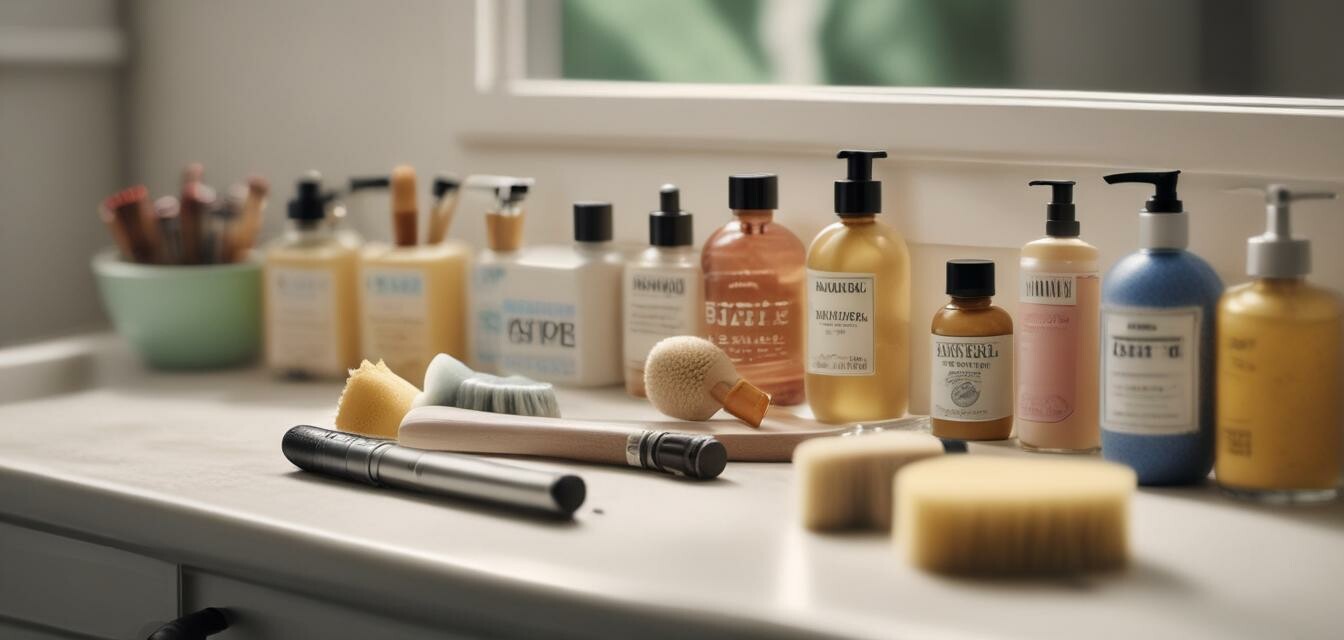
This article was generated using AI and is based on real customer reviews from the Amazon platform. It contains affiliate links, meaning we may earn a commission—at no extra cost to you. As Amazon Associates, we earn from qualifying purchases.
The Best DIY Solutions for Beauty Tool Cleaning
Key Takeaways
- Using homemade solutions can effectively clean beauty tools without harsh chemicals.
- Common household ingredients like vinegar, baking soda, and lemon are excellent for tool maintenance.
- Regular cleaning can extend the life of your beauty tools and keep your skin healthy.
Keeping your beauty tools clean is essential for maintaining their effectiveness and ensuring your skin stays healthy. Luckily, there are many easy and practical DIY solutions using everyday ingredients found in your home. In this article, you'll discover the best ways to clean tools such as makeup brushes, sponges, and more, all while preventing the buildup of bacteria and grime.
Why Clean Your Beauty Tools?
Regular cleaning of your beauty tools not only extends their lifespan but also promotes healthier skin. Caked-on makeup and oils can lead to breakouts and other skin issues if not addressed. Here are some key reasons why keeping your tools sanitized is important:
- Prevents skin irritations and breakouts.
- Enhances the performance of beauty tools.
- Extends the longevity of your investment.
Essential DIY Cleaning Solutions
Below are some effective homemade cleaning solutions tailored to different types of beauty tools:
1. Makeup Brushes
A simple yet powerful solution for cleaning makeup brushes can be made with the following ingredients:
- 1 cup of warm water
- 1 tablespoon of olive oil (removes makeup residue)
- 1 tablespoon of dish soap (cleans and sanitizes)
Instructions:
- Mix the ingredients in a bowl.
- Swirl your brushes in the solution for about 10-15 seconds.
- Rinse the brushes under warm water and reshape them.
- Lay them flat to dry.
2. Sponges and Puffs
Sponges need thorough cleaning due to their high moisture retention. Here's a quick fix:
- 1 cup of water
- 1 tablespoon of white vinegar (disinfects)
Instructions:
- Mix water and vinegar in a bowl.
- Soak the sponge or puff in the mixture for 10 minutes.
- Rinse thoroughly and let it dry completely before using.
3. Facial Tools
Facial tools like jade rollers can be gently cleaned as follows:
- 1 cup of warm water
- 1 teaspoon of tea tree oil (antibacterial properties)
Instructions:
- Combine warm water with tea tree oil.
- Dip a cloth in the solution and wipe your facial tool gently.
- Rinse the tool with warm water and pat dry.
4. Nail Tools
Nail tools require particular attention to prevent infections:
- 1 cup of rubbing alcohol (disinfects all tools)
Instructions:
- Submerge your nail tools in rubbing alcohol for about 10-15 minutes.
- Rinse with warm water and allow them to air dry.
Comparison of Cleaning Solutions
| Beauty Tool | Cleaning Ingredient | Benefit |
|---|---|---|
| Makeup Brushes | Olive oil & dish soap | Removes residual makeup and sanitizes brushes |
| Sponges | White vinegar | Disinfects and deodorizes the sponge |
| Facial Tools | Tea tree oil | Provides antibacterial protection |
| Nail Tools | Rubbing alcohol | Effectively disinfects tools |
Tips for Maintaining Clean Beauty Tools
Cleaning Tips for Beginners
- Establish a cleaning routine—try to clean your tools at least once a week.
- Always rinse your tools thoroughly after cleaning to prevent product buildup.
- Store tools in a clean, dry place to avoid contamination.
Pros
- Cost-effective solutions using household items.
- Reduces exposure to harsh chemicals.
- Easy to follow instructions.
Cons
- May require continuous effort for best results.
- Some ingredient combinations may not work for all users.
Conclusion
Maintaining clean beauty tools is not only easy with these DIY solutions but also essential for skin health. By using simple household ingredients, you can prolong the life of your tools and protect your skin from potential irritants or infections. Don't forget to establish a consistent cleaning routine for the best results. For more cleaning tips, check out our Cleaning Tips category.